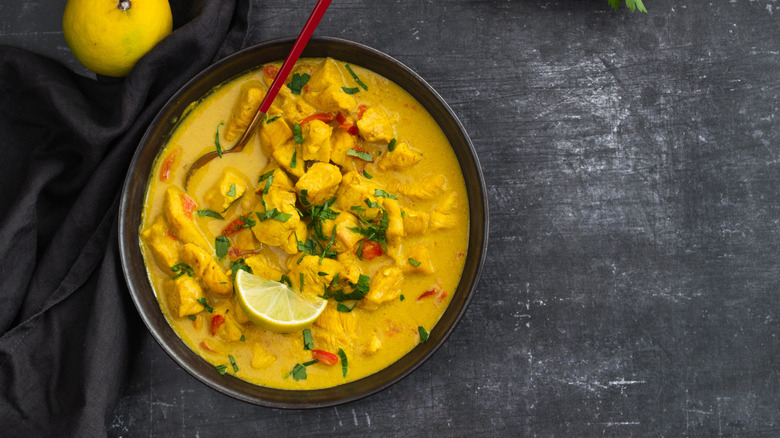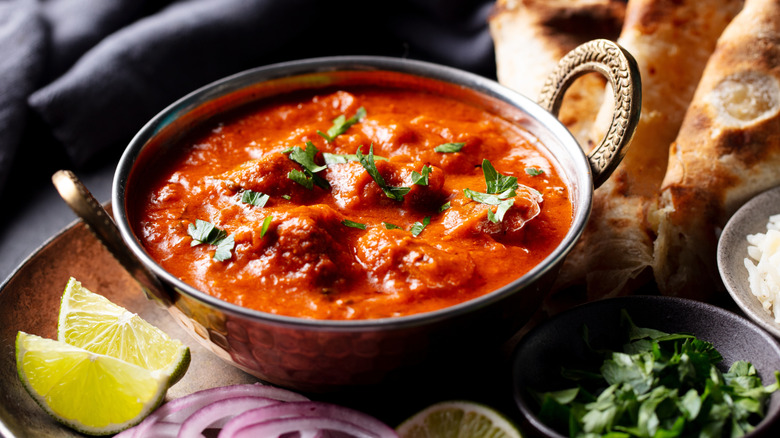Here Are The Differences Between Thai And Indian Curry
Although several cultures have dishes that share the same name, it's pretty frequent for there to be differences, big and small, between them. For Americans, the most obvious example of this is likely the difference between American fried chicken and Korean fried chicken. However, curry, one of the most popular dishes in the world, also varies drastically depending on which country it is from. This is especially true when you compare Indian and Thai curry which differ in texture, ingredients, spice level, and how long they take to cook.
We were given some insight into the key similarities and differences between Thai and Indian curry by Mehek Khera, founder of Niramaya Foods. In an interview with The Takeout, Khera explained, "Curry is broadly defined as a dish that features a spiced sauce, often with vegetables, meat, or seafood." However, because countless dishes fall under that description's umbrella, it's no surprise that each country makes the dish quite differently. As Khera said, "Curries exist across many cultures [...] However, these cuisines are very different from each other in terms of origins, heritage, ingredients, and methods of cooking deployed."
Above all else, Khera noted that the different ingredients used in the Thai and Indian versions of curry — a dish that has an incredible history — sets them apart. "Indian curries use dry spices [including] cumin, coriander, and turmeric," the Niramaya Foods founder explained. She added, "While Thai curries rely on fresh curry pastes [that contain] lemongrass, galangal, and [makrut] lime."
The curries have different textures and flavors
The different ingredients used to make Thai and Indian curry, among other things, make the texture of each dish quite unique. Thai curry typically has a much thinner consistency than Indian curry. Mehek Khera explained, "Indian curries tend to be thicker or really thin with fresh veggies, whereas Thai curries are more broth-like, thanks to coconut milk [...] Indian curries often simmer longer for depth, while Thai curries cook quickly to retain fresh flavors."
Finally, when it comes to taste, Indian curries boast varying degrees of heat — and are sometimes not quite spicy enough for our liking — while Thai curries often carry a notable sweetness alongside an equally impressive level of pungency. The aforementioned coconut milk and other ingredients like tamarind and either palm or brown sugar give Thai curry its sweetness, while the Thai curry paste grants it the unmistakable spiciness it oftentimes possesses. Khera explained, "Indian curries have a range from mild to very hot [...] while Thai curries are often hot but [are] balanced with sweetness."

